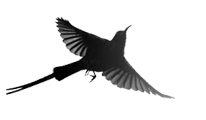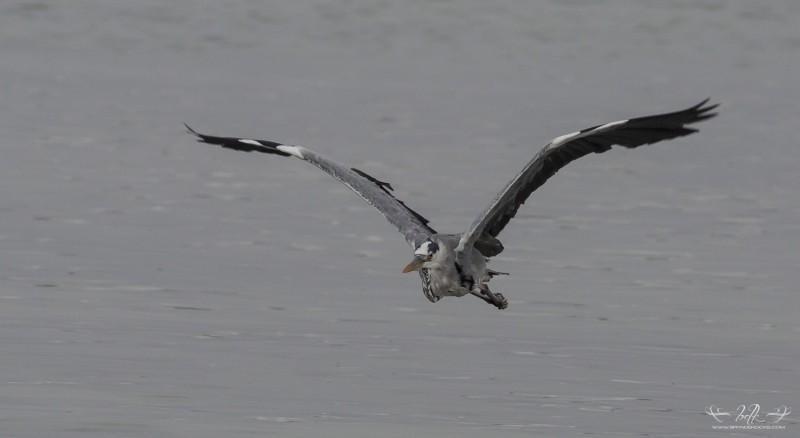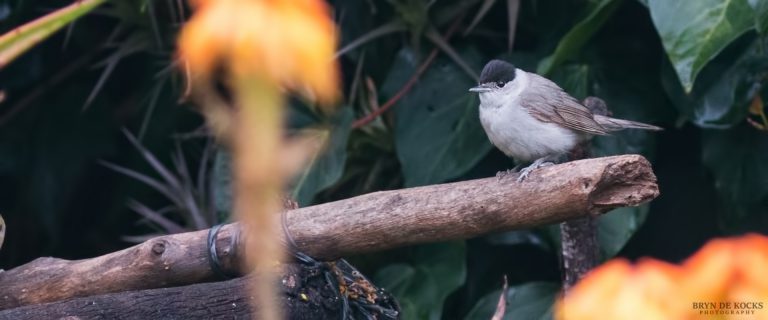Birding at the West Coast National Park – 21 March 2013
After a successful, but fairly quiet birding trip with Michael McSweeny – who I first met at one of the Rondevlei hides in 2011 or 2012, we decided that we should make another plan to head out again, this time to the West Coast National Park. The WCNP is an area that I have visited twice in the past, and both times – the weather was far from great with rain or cloud and wind. With the 300+- kilometer round trip that one needs to make from Cape Town, I wanted to make sure that the weather was going to be good this time. The day prior I checked the weather forecasts and everything looked good, with sunshine and a warm 29’C forecast for the area.
Cathryn and I met up with Michael and Diane at 06:30, where we promptly packed the bags in the car and set off on our journey. A Common Redshank had been reported at the Geelbek hide for the past week or so, and we were hoping to add it to our lists. On the drive, the weather looked as forecast – no signs of clouds and the winds were still.
We scanned the poles along the roadside on the West Coast Road for raptors. First up was a Steppe Buzzard, followed by another… Then several Black Shouldered Kites and a single perched Black Harrier.


As we approached the park, a mere 5 or so kilometres out – the skies turned dark and we entered into an alternate universe, where forecasts and surrounding weather mean nothing. There was thick mist around and the conditions, for photography at least, looked awful. We entered the park and it was still completely overcast. At the gate we came across some Bokmakieries just off the side of the road. We then continued on, our destination – Geelbek.
We arrived at the hide and got out the car, assembling our camera equipment, when suddenly a Black Shouldered Kite appeared next to us, hovering in a single spot. We knew the lighting was far from complimentary, so we just watched. Then another BSK joined him, and another, and another… At one point there were 5 Black-Shouldered Kites, all hovering in a single area – a sight that none of us had seen before. Another Kite that we saw, was a Yellow Billed Kite that flew over our parked car as we were in the process of parking.


A walk to the hide revealed some Little Stints and some Kitlitz Plovers. Cape Wagtails hopped across the area while White Throated Swallows were also seen flying across the marsh. After entering the hide, we were surprised to see some familiar faces. Basil Boer and Johan Slabbert, also members of the Somerset West Bird Club – were already seated in the hide and doing the wader watching thing. Both Lesser and Greater Flamingos were present in front of the hide, along with some African Shelduck. Pied Avocets and Common Greenshank were also present, wading in the shallow waters. Diane then spotted a raptor to the right side of the hide, we quickly moved to the viewing areas of the hide and tried to get a better view – it was one of the Marsh Harriers, probably one of the more common raptors in the park, behind the BSK. The Harrier wasn’t feeling too keen on being photographed though and moved away from the hide. We left the hide to a line of perched White-Throated Swallows, which lined the walk way leading to the hide.


It was then on to the second Geelbek hide, on the car side, near the restaurant. When walking towards the hide, I noticed something on top of the restaurant roof. It was a Rock Kestrel, enjoying the bit of sun that was now beginning to poke through the clouds. He was sitting contently, preening himself, completely happy with the fact that we had to walk directly under him to get to the hide. We stood and watched as this beautiful, small raptor preened itself thoroughly – allowing us to take shot after shot, from a distance that one normally can never get to with wild raptors. He really put on a show us and I was beyond thrilled to have been able to get some shots of a Rock Kestrel that required me to actually move further away as to not have it fill too much of my viewfinder.


On the walk to the hide, we came across several Pied Starlings, a bird that always seems to evade any decent photograph – and a pity too, they have amazing eyes. A few Speckled Pigeons came flying out of the hide when Michael opened the door, but in the hide – we didn’t see too many waders; we did however come across some Terns fishing in front of us, a Caspian Tern, Swift Tern and a Sandwich Tern all took turns (no pun intended) at passing by the hide. We unfortunately hadn’t been able to locate the Common Redshank that was reported here.




It was then time to begin our trip back towards the entrance of the park and to head home, we got in the car and began the drive. A Kestrel came to us and Mike decided that we should try and chase it so that I could get some shots out of the window, the individual had a very light underpart and couldn’t see spotting and didn’t want to miss out on the possibility of a Lesser Kestrel, after we caught up with the bird (a U-Turn later), I got some shots and confirmed it was just a Rock Kestrel. It was then time for another U-Turn and back towards the park entrance. We were driving along when Diane pointed out a raptor in the distance, it was also coming towards us, we continued to drive as it passed over the car and then tracked next to us at a fair height. I squeezed off a few shots, but we were still unsure of what it could be… All we could see were white underparts with black coverts – at a distance there was the thought of Booted Eagle, but this bird had a wing shape that I’d never seen before, far more sharp. We stopped the car and all hopped out to try get some shots as it began moving away from us. I looked down at my camera’s LCD and viewed what I had shot. “I’m 99.9% sure that’s an Osprey!”, I exclaimed. There are occasionally Osprey seen in the park, but it’s by no means a common sighting for the area and we were all thrilled to have seen this majestic hawk.




The day was made at this point, if was hard to choose a highlight between the posing Rock Kestrel and the Osprey.
We made a final stop at the Abrahamskraal hide, where we found some Cape Shoveler, Cape Teal and Red-Knobbed Coots. Nothing too exciting, as we were hoping to come across the Black Crake or perhaps African Rail, but it wasn’t to be.
A big thanks to Michael for the lift and for a great day out. It was truly a wonderful few hours and we all managed to get some new ticks for our life lists.
























Awesome blog post Bryn!
Absolutely Great Bryn. What a great trip…good pic of the Bar-tailed Godwit, which strangely only seems to frequent the Seeberg hide. GREAT pics of the Rock Kestrel. The very first bird – is it a Knot, I think so, but am not good at Knots :).
Re the BSKs, some years ago, I saw a strange sight of many birds roosting (it was evening) on a bare palm tree in the park. It turned out to be 24 BSKs!!!!!
Hi Bryn,
your trip and pictures make me want to go up to the park immediately. Pity it is just a little bit to far for more frequent visits. It is such an interesting place.
All the best Heide